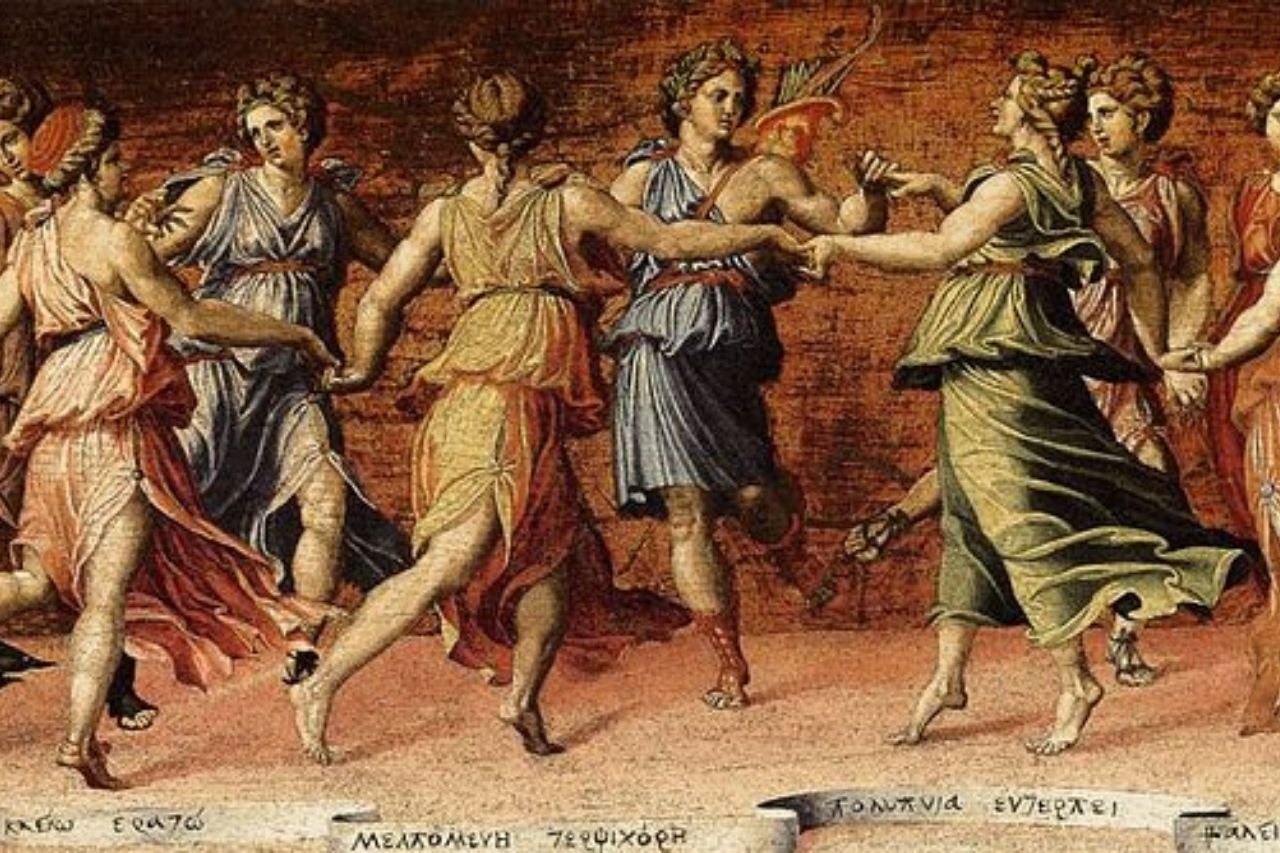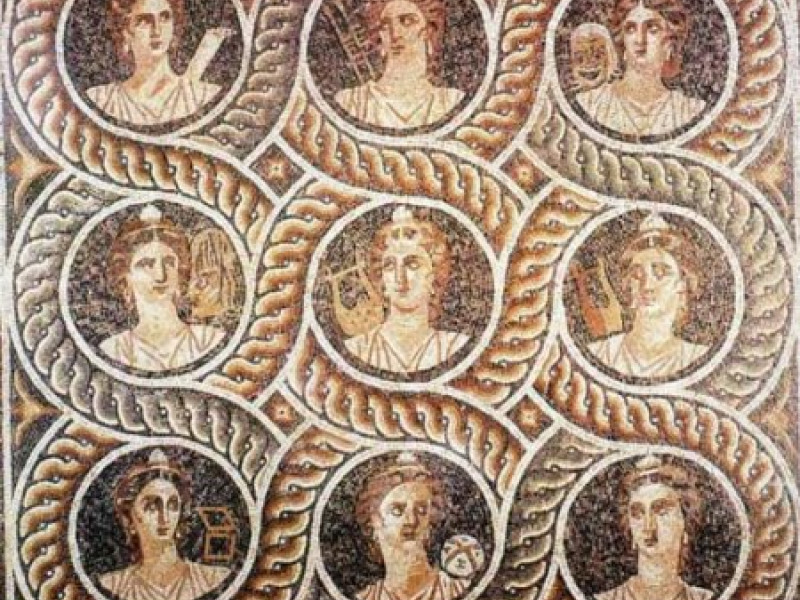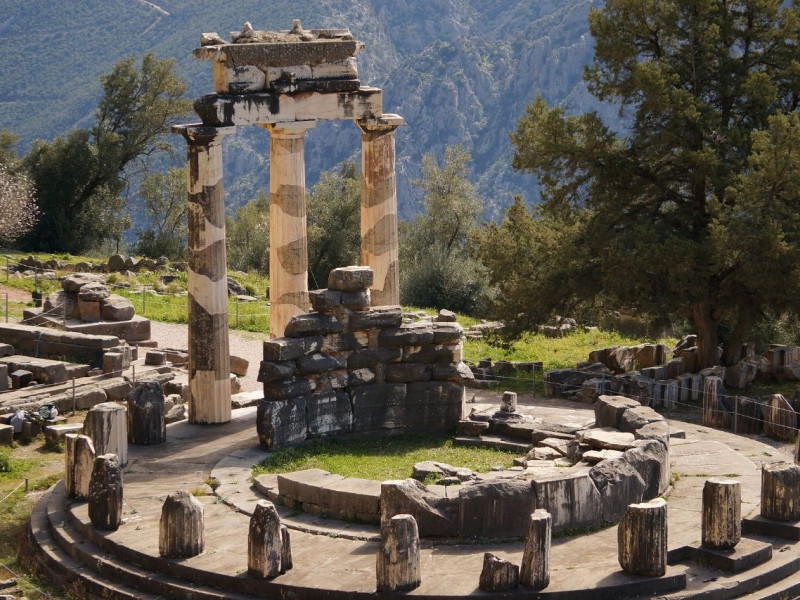Kleio (Clio): The Muse of History
Kleio was one of the goddesses of music, dance, and song, famously known as the Muses in Greek mythology. Clio muse was commonly depicted holding an open parchment scroll, sitting beside a chest of books or a set of tablets. Keep on reading through as more facts and information about this goddess are written below.
About Kleio
Kleio, also spelled Clio meaning “to celebrate,” “to make famous,” or “to recount” was derived from the Greek verb “kleo.” As muses, they were assigned specific literary and artistic spheres in the classical era, and Clio was identified as the muse of history. She was also considered the muse of lyre playing and patron of the guitar.
Aside from being depicted holding an open scroll and sitting next to books, she was frequently represented holding the heroic trumpet and the clepsydra or a water clock and was sometimes referred to as “The Proclaimer.”
Kleio was one of the daughters of the god of the sky, Zeus, and the goddess of memory and a Titaness, Mnemosyne. She dwells at Mount Helicon together with her sister muses. Others stated that they dwell at Mount Parnassos or Pieria in Thessaly located near Mount Olympus.
Love Life
She was meant to fall in love with Pierus, joined together by the goddess of love and purity, Aphrodite, who saw them as the perfect match for each other. However, at the time, Kleio had expressed her love and love affair with Adonis to Aphrodite. As She heard this notion she was so quick to punish her and forcefully pushed her to love Pierus, the king of Macedonia.
They bore together a son who was named Hyacinthus or Hyacinth, whom she bore with King Pierus of Macedonia, King Amyclas the forefather of Sparta, or King Oebalus of Sparta. Hyacinthus was a divine hero and a young man of great beauty who was killed by the god Apollo, his lover. From the blood of Hyacinthus, a flower sprang and was called Hyacinth.
Several accounts suggested that Kleio was the mother of Hymenaios, also spelled Hymenaeus, who was considered one of the Erotes or the winged gods of love and also the patron god of weddings, and Linus, a poet and a musician who has several sets of parents depending on the account. He was also depicted as the son of the other muses, Urania or Calliope, and a sibling of Orpheus.
Legacy
The traditional Latinization of her name was Clio, but modern systems of this day use the letter “K” to represent the original Greek kappa. As her name represents her as “the proclaimer, glorifier, and celebrator of history, astonishing deeds, and incredible accomplishments,” in the modern day, the name Kleio which evolved to the more popular “Clio” has been used in some coined words in academic usages, such as cliometrics and cliodynamics.
Various modern brands, such as those in advertising, have the Clio Awards for excellence. In some colleges and universities, they refer to the name “Clio” as a name for their society.
This muse has appeared in several other mythologies or traditional folk tales, such as in the tales of Finland, Cyprus, and even Albania. Furthermore, in modern writings, you see her in the writings of novelists such as Voltaire, Igor Stravinsky, and further others.
Art Depiction
Kleio was represented in various art depictions dating as early as the 16th to 17th centuries. One print of Kleio that was made during that time was preserved in the Ghent University Library. In 1632, Artemisia Gentileschi, an Italian Baroque painter, painted “Clio, the Muse of History.” In 1689, a French painter named Pierre Mignard, painted the artwork named “The Muse Clio.”
In 1800, Kleio was depicted as a winged goddess holding a tablet in an artwork by Charles Meynier called “Clio, Muse of History.” In 1819, a sculpture of a figural clock in the form of a chariot depicting Clio, which now can be found in National Statuary Hall, was made by Carlo Franzoni.
Another sculpture of Clio was made by Alexander Stirling Calder and was located on the tomb of a historian named Henry Charles Lea. Bernhard Rode, a Prussian artist, also has a depiction of Clio in a painting called “The Muse Clio.” furthermore, a “Statue of Clio” that can be found in Berlin was made by Albert Wolff, a German sculptor, and medalist.
FAQ
Who Are the Muses in Greek Mythology?
In ancient Greek culture, the nine muses were the inspirational goddesses of science, literature, and the arts. They were regarded as the sources of knowledge incorporated in poetry, myths, and the lyrics of songs that were performed orally for centuries. The other sisters of Clio whom poets, musicians, dramatists, and authors invoked in their literary works. Their names are Calliope, Erato, Euterpe, Melpomene, Terpsichore, Thalia, Polyhymnia, and lastly Urania.
Conclusion
In summary, Kleio or Clio was the goddess of history in Greek mythology and is also one of the muses revered by artists and literature enthusiasts. These points are the aspects that we covered so far in this article:
Kleio was one of the nine Muses in Greek Mythology.
These Muses were the daughters of Mnemosyne and Zeus.
They are believed to live on Mount Helicon or Mount Parnassos. Each muse represents different literary and artistic spheres in the classical era.
She represented the muse of the lyre, the musical instrument that she played so gracefully.
To this very day, art is still being made by the inspiration and the muse coming from Kleio.
Kleio is such a fascinating muse worth knowing more and deserves greater recognition among the muses. Now, you know all about this beautiful and graceful muse.









